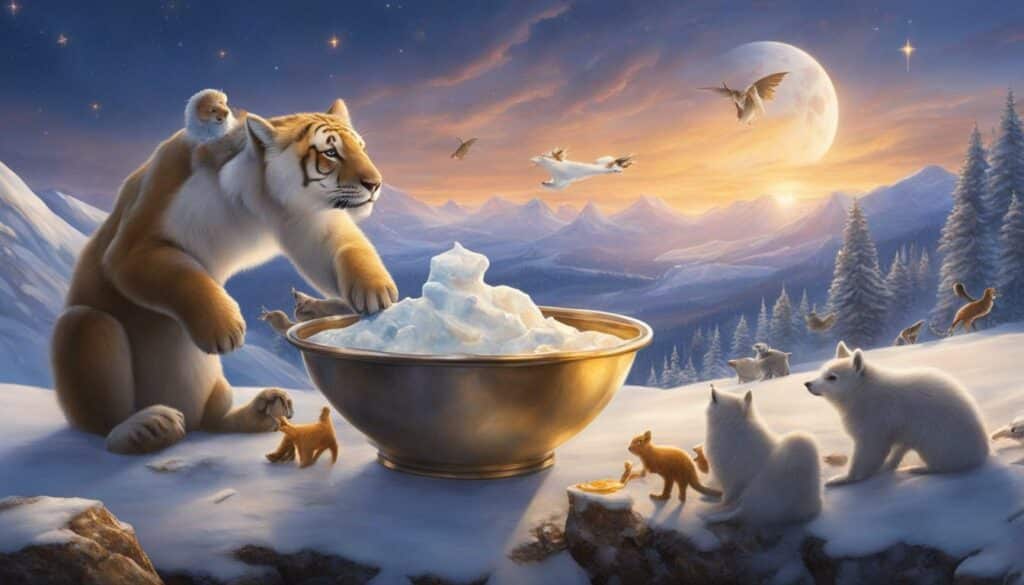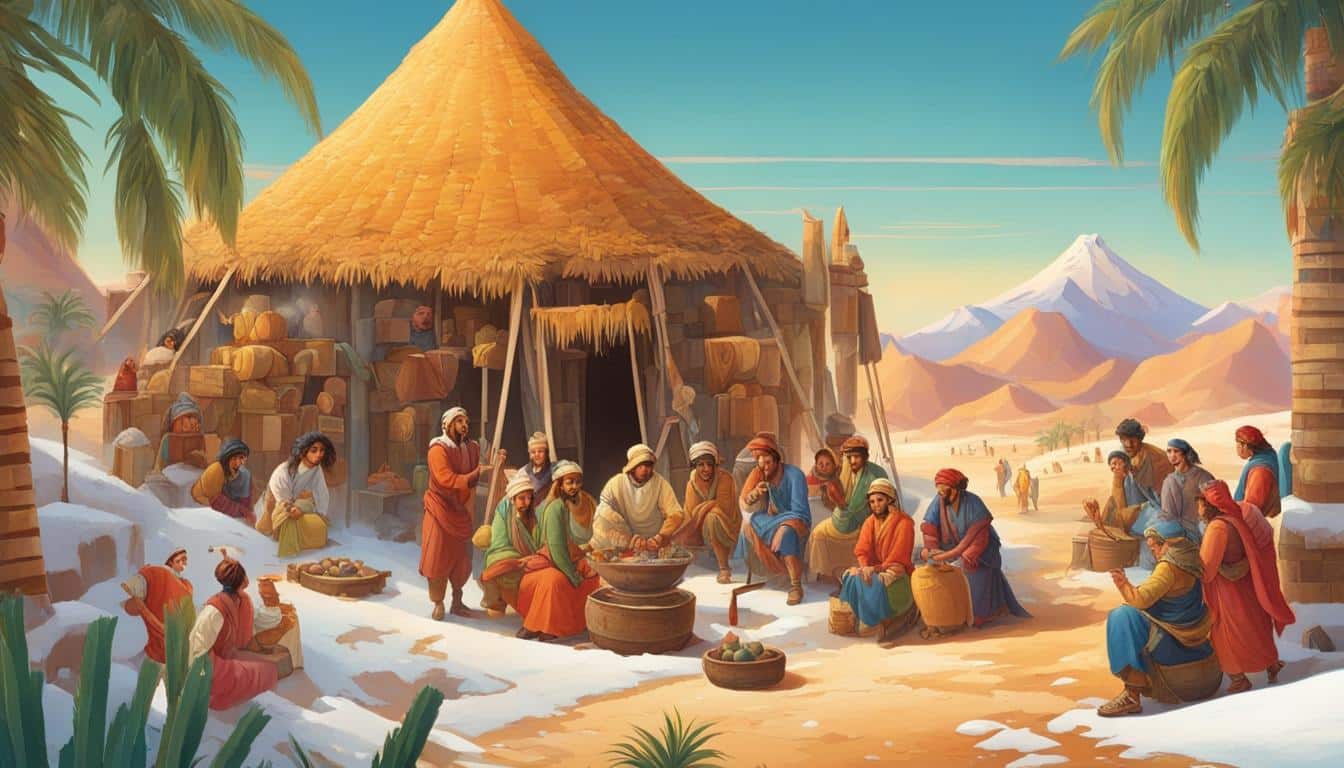Ice cream, the beloved frozen treat enjoyed by people of all ages, has a fascinating history that traces back centuries and across continents. From its humble beginnings in ancient China to the mass-produced delight we know today, ice cream has undergone a remarkable evolution.
In ancient China, a refreshing dessert made from a mixture of milk, rice, and snow was enjoyed as a precursor to ice cream. However, it wasn’t until the Middle Ages that ice cream as we know it began to emerge. It was Italian and French chefs who first experimented with freezing mixtures of cream, sugar, and flavorings, creating delicacies that quickly gained popularity among European royalty.
In the 18th century, the invention of the hand-cranked ice cream churn revolutionized the production process, making it easier to create larger quantities of ice cream. The availability of ice cream expanded, and it became a treat enjoyed by people from all walks of life.
Today, ice cream continues to be a global favorite with countless flavors and variations to satisfy every sweet tooth. Whether you prefer classic flavors like vanilla, chocolate, or strawberry or enjoy more unique options like green tea or durian, there is an ice cream flavor for everyone.
Key Takeaways:
- Ice cream has a rich history that can be traced back to ancient China.
- Italian and French chefs played a significant role in shaping ice cream as we know it today.
- The invention of the hand-cranked ice cream churn made ice cream more widely available in the 18th century.
- Ice cream comes in countless flavors and variations to suit different tastes.
- Ice cream is enjoyed by people worldwide, with each culture adding its own unique twist to the frozen treat.
The Evolution of Ice Cream Making
Over time, the process of making ice cream has evolved significantly. In the early days, ice cream was made by hand-churning a mixture of cream, sugar, and flavorings in a container surrounded by ice and salt. This labor-intensive process required patience and skill. With the advent of modern technology, mechanical churns and ice cream machines were introduced, simplifying and speeding up the production process.
Later innovations, such as the invention of the continuous freezer, allowed for mass production of ice cream. Today, commercial ice cream manufacturers use advanced equipment and techniques to create smooth and creamy ice cream with consistent quality. The history of ice cream making is a testament to human ingenuity and our love for this frozen delight.
Ice Cream Making Timeline
| Time Period | Development in Ice Cream Making |
|---|---|
| Ancient China | Mixture of milk, rice, and snow enjoyed as a dessert |
| Middle Ages | Italian and French chefs experiment with freezing mixtures of cream, sugar, and flavorings |
| 18th Century | Invention of the hand-cranked ice cream churn |
| 19th Century | Introduction of mechanical churns and ice cream machines |
| 20th Century | Invention of the continuous freezer for mass production |
| Present Day | Utilization of advanced equipment and techniques for high-quality ice cream production |
Throughout history, the process of making ice cream has undergone remarkable transformations, from simple hand-churning to sophisticated machinery. These advancements have allowed for greater accessibility and variety in ice cream production, bringing joy to dessert lovers worldwide.
Who Discovered Ice Cream?
While the exact origins of ice cream are uncertain, there are several stories and legends surrounding its discovery. One popular tale involves Marco Polo, the famous Italian explorer who supposedly brought back a recipe for a frozen dessert from his travels in China.
According to the story, Marco Polo encountered a sweet concoction made from mixing ice and milk during his journey. Intrigued by this delightful treat, he brought the recipe back to Italy, where it eventually evolved into the ice cream we know today.
Another story attributes the invention of ice cream to Catherine de’ Medici, a queen consort of France in the 16th century. Legend has it that she introduced the treat to the French court, where it quickly gained popularity.
“It is said that the demand for ice cream was so high in the French court that Catherine de’ Medici had a personal ice cream chef named Ruggeri to satisfy her cravings.”
However, it is important to note that these stories are largely based on speculation and lack concrete evidence. The true inventor of ice cream remains unknown, but its creation can be attributed to the collective culinary innovations of different cultures throughout history.
Whether it was Marco Polo’s discovery or Catherine de’ Medici’s introduction, the story of ice cream’s origins is shrouded in mystery and intrigue. Regardless of who truly discovered it, we can all agree that ice cream is a delightful treat enjoyed by people all over the world.

Theories on Ice Cream’s Origins:
| Theory | Supporting Information |
|---|---|
| Ancient China | Ancient Chinese were known to consume a mixture of milk, rice, and snow as a frozen dessert. |
| Persian Influence | Some historians believe that Persian traders introduced ice cream to the Arab world and eventually Europe. |
| Arabic Innovations | Arabic inventors contributed to the development of flavored ices, which were predecessors to modern ice cream. |
| Italian and French Influence | Italian and French chefs in the Middle Ages experimented with freezing mixtures of cream, sugar, and flavorings. |
Ice Cream: A Global Favorite
Ice cream has become a beloved treat enjoyed by people across the globe, with various flavors and variations reflecting different cultures’ tastes and preferences. Let’s explore the popular ice cream flavors and the growing consumption of this delectable frozen dessert.
Ice Cream Flavors Around the World
In the United States, ice cream is considered a staple dessert and is cherished by individuals of all ages. The classic flavors of vanilla, chocolate, and strawberry remain ever-popular, satisfying the palates of millions.
In Italy, gelato is a renowned treat known for its smooth, dense, and creamy texture. Gelaterias offer a wide range of flavors, from traditional favorites like pistachio and hazelnut to unique combinations like stracciatella (chocolate chip) and fruity sorbets.
In India, kulfi holds a special place in the hearts and taste buds of dessert enthusiasts. This traditional frozen dairy dessert is often flavored with fragrant spices like cardamom, saffron, or infused with chopped nuts such as pistachios or almonds.
Countries in East Asia have also made their mark on the ice cream scene with distinct flavors. In Japan, green tea ice cream, known as matcha, is a popular delicacy with its subtle sweetness and earthy undertones. Meanwhile, Thailand is famous for its unique durian-flavored ice cream, catering to those who appreciate the distinctly pungent and creamy fruit.
These are just a few examples of the diverse frozen delights enjoyed by ice cream enthusiasts worldwide. Every culture has its own spin on this delectable treat, adding to the rich tapestry of flavors that satisfy sweet cravings across the globe.
Ice Cream: A Growing Phenomenon
Ice cream consumption continues to rise globally, with new flavors and innovations constantly being introduced to cater to different taste preferences. Its universal appeal and versatility make it a treat that transcends geographical boundaries and cultural differences.
To illustrate the growing popularity of ice cream consumption, here is a table showcasing the top 5 ice cream-consuming countries around the world:
| Country | Annual Ice Cream Consumption (liters per capita) |
|---|---|
| United States | 22.3 |
| New Zealand | 20.2 |
| Australia | 18.0 |
| Denmark | 16.0 |
| Canada | 13.9 |
As seen in the table, the United States leads the pack in terms of annual ice cream consumption per capita. This is a testament to the unwavering love for this frozen treat in American culture.
The combination of innovative flavors, advancements in production technology, and the simple joy that ice cream brings have contributed to its ever-growing popularity. Whether enjoyed in a waffle cone, a cup, or as part of a delectable sundae, ice cream continues to bring smiles to faces all around the world.
Indulge yourself with a scoop of your favorite flavor and savor the sweetness of this global favorite.

Conclusion
The rich history and artistry behind the invention and evolution of ice cream have transformed it into a beloved frozen treat enjoyed by people worldwide. From its ancient Chinese roots to the bustling ice cream parlors of today, this delightful dessert has mesmerized our taste buds and brought happiness to countless individuals.
Through the exploration of diverse flavors, remarkable advancements in ice cream-making technology, and the distinctive cultural variations in recipes, ice cream has become an ever-evolving culinary experience. Each scoop represents centuries of innovation and creativity, resulting in a frozen delight that continues to entice and satisfy our sweet cravings.
So the next time you savor a scoop of your favorite ice cream flavor, take a moment to appreciate the journey and expertise that gave rise to this indulgent treat. Reflect on the inventive genius of ancient Chinese connoisseurs and the ingenuity of Italian and French chefs who pioneered the early versions of ice cream. Let’s celebrate the passion and dedication of all those who have contributed to the history and success of ice cream, making it a universally adored dessert that brings joy to people of all ages.
Protein Ice Cream: Your Delicious Solution for Fitness Goals
FAQ
How was ice cream invented?
The origins of ice cream can be traced back to ancient China, where a mixture of milk, rice, and snow was enjoyed as a refreshing dessert.
What is the history of ice cream?
Ice cream has a rich history that spans centuries and continents. Italian and French chefs in the Middle Ages experimented with freezing mixtures of cream, sugar, and flavorings, which gained popularity among European royalty. In the 18th century, the invention of the hand-cranked ice cream churn made it easier to produce ice cream in larger quantities, leading to its widespread availability.
Who invented ice cream?
The true inventor of ice cream remains unknown, as its creation can be attributed to the collective culinary innovations of different cultures throughout history.
What is the process of making ice cream?
Over time, the process of making ice cream has evolved. It was initially made by hand-churning a mixture of cream, sugar, and flavorings in a container surrounded by ice and salt. With the advent of modern technology, mechanical churns and ice cream machines were introduced, simplifying and speeding up the production process.
What are some popular ice cream flavors?
Popular ice cream flavors include vanilla, chocolate, and strawberry. However, there are countless flavors and variations available to satisfy every sweet tooth.
How is ice cream consumed around the world?
Ice cream has become an integral part of many cultures worldwide. In the United States, it is a staple dessert enjoyed by people of all ages. In Italy, gelato is a beloved treat known for its dense and creamy texture. In India, kulfi is a traditional frozen dairy dessert flavored with cardamom, saffron, or pistachios. Japan and Thailand also offer unique flavors such as green tea and durian.







